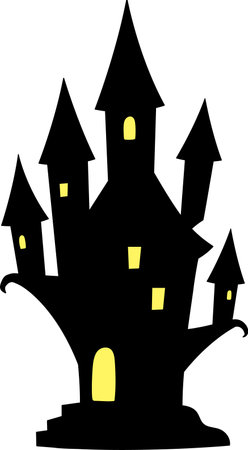Introduction: Spirits Among Us
Throughout the winding lanes of British villages and the bustling streets of its cities, tales of ghosts have woven themselves into the very fabric of daily life. For centuries, spirits and hauntings have captured the imagination of those living on these isles, inspiring stories passed down from one generation to the next. From whispered legends by the fireside to grand accounts written in local history books, the British fascination with ghosts remains as strong today as it was in the days of yore. This enduring captivation finds a special place in two cherished settings: the traditional pub and the family home. Here, superstitions mingle with reality, shaping customs and beliefs that continue to influence how people gather, celebrate, and even rest. As we begin our exploration into this world of spirits—both ethereal and bottled—we set the stage for a journey through the haunted heart of British culture.
2. Historic Hauntings: A Tradition of Ghost Stories
The United Kingdom is steeped in a long tradition of ghostly tales and supernatural beliefs, with each region boasting its own unique legends that have shaped the nation’s cultural landscape. From windswept castles on misty moors to the timeworn beams of ancient pubs, ghost stories are woven into the very fabric of British life. The roots of these haunting traditions reach deep into medieval times, when superstition and folklore were an integral part of daily existence. In those days, spectral apparitions were often thought to be omens—sometimes warning of danger, sometimes seeking justice from beyond the grave.
During the Victorian era, fascination with the supernatural flourished as advances in science paradoxically fuelled public interest in spiritualism and séances. Families would gather by candlelight to share spine-chilling tales, while writers such as Charles Dickens and M.R. James brought ghost stories into the literary mainstream. Across Britain, historic houses and venerable inns became famed not just for their architecture or hospitality, but also for their resident phantoms—each with a story as rich as the building itself.
Timeline of British Ghost Lore
| Era | Key Features | Notable Examples |
|---|---|---|
| Medieval | Folkloric ghosts; omens; morality tales | The Green Lady; Headless Horseman |
| Tudor & Stuart | Royal hauntings; witch trials; spectral warnings | Anne Boleyn at the Tower of London |
| Georgian & Regency | Scepticism grows; gothic literature emerges | The Hound of Baskervilles (inspired) |
| Victorian | Spiritualism craze; séances; ghost clubs formed | M.R. James’ ghost stories; haunted theatres and pubs |
| Modern Day | Media coverage; paranormal investigations; heritage tourism | The Ancient Ram Inn; The Grenadier Pub, London |
This enduring legacy continues to fascinate locals and visitors alike. Whether whispered over a pint in a centuries-old tavern or recounted during a candlelit tour of a stately home, Britain’s ghost stories remain a cherished part of its national identity—connecting past and present in a tapestry of mystery, superstition, and storytelling.

3. Pubs: The Local Haunt
Across the length and breadth of Britain, the local pub is much more than a place for a tipple; it is often regarded as a gathering spot not only for villagers but also for spirits from ages past. The very foundations of many pubs are steeped in history, with centuries-old beams echoing laughter and whispered secrets from bygone patrons. It is little wonder, then, that these establishments are so closely linked with tales of hauntings and ghostly superstitions.
The belief that pubs attract spirits stems partly from their role at the heart of communal life. Over the years, these venues have witnessed countless celebrations, quarrels, and even tragedies—emotions said to leave imprints on the very walls themselves. In some cases, pubs were once coaching inns or meeting places for secret societies, further adding to their mystical reputation.
Among the most legendary haunted pubs in Britain is The Skirrid Mountain Inn in Wales. Dating back over 900 years, it carries stories of restless souls connected to its dark history as a courtroom and execution site. Guests often report cold spots and mysterious footsteps, attributing these phenomena to lingering spirits unwilling to depart. Similarly, London’s The Ten Bells is notorious for its association with the victims of Jack the Ripper; spectral sightings here are considered by many to be echoes of those tragic events.
The lore surrounding these establishments is lovingly preserved by landlords and locals alike, who share stories passed down through generations. Whether it’s a spectral landlord keeping watch over his former domain or a regular who refuses to let death end his nightly routine, such legends form an essential part of British pub culture. They offer comfort in continuity—a sense that the past is never truly gone but lives on alongside the clink of glasses and soft glow of lantern light.
4. Homebound Phantoms: Ghostly Residents
In the tapestry of British folklore, few motifs are as enduring as the presence of household phantoms. For centuries, tales of spirits who linger in ancestral homes have shaped not only superstitions but also the very rhythm of daily life. Many British families, particularly in rural villages and historic towns, hold fast to age-old beliefs regarding ghostly residents and their habits. Some ghosts are thought to be former inhabitants—restless souls who cannot leave due to unfinished business or a tragic fate. Others are believed to be protective ancestors, quietly watching over their descendants.
Common Household Ghost Superstitions
Superstitions about domestic hauntings vary across regions, yet certain themes recur throughout the United Kingdom. The table below highlights some of the most well-known beliefs:
| Superstition | Description | Traditional Response |
|---|---|---|
| The Death Knock | Hearing three unexplained knocks is often considered a harbinger of death or misfortune within the home. | Recite prayers, sprinkle salt at doorways, or keep vigil for loved ones. |
| The Restless Chair | A rocking chair that moves on its own is said to be occupied by a visiting spirit. | Leave an empty chair undisturbed out of respect for spectral guests. |
| The Cold Spot | A sudden chill in a specific room is believed to signal the presence of a ghost. | Light a candle or burn sage to cleanse and comfort the household. |
| The Mysterious Footsteps | Unexplained footsteps upstairs are thought to indicate an ancestor checking on the family. | Acknowledge aloud and thank them for their vigilance. |
Influence on Domestic Life
These beliefs have subtly influenced domestic routines and customs. It was once common practice, particularly in older English homes, to leave a window slightly ajar after a death—to let the soul depart unimpeded. Families might hang horseshoes above doors not just for luck but also to ward off mischievous spirits. Even today, some households avoid rearranging inherited furniture out of respect for those believed still attached to these items.
The Gentle Hauntings of Everyday Existence
The British approach to domestic hauntings is often marked by a gentle stoicism and reverence for tradition. Rather than fear, many see these ghostly presences as reminders of lineage and continuity—a thread connecting past generations with the present. Through storytelling and custom, such beliefs continue to shape how families relate both to their homes and to those who came before them.
5. Protective Traditions and Superstitious Rituals
Across Britain, a wealth of time-honoured customs has developed to keep spirits at bay or ensure peaceful cohabitation with the unseen. These folk practices are woven into the very fabric of daily life, especially in centuries-old pubs and homes where tales of hauntings often linger in the air. One of the most iconic protective charms is the horseshoe, typically hung above doorways with its ends pointing upwards to “hold in” good fortune and ward off malevolent entities. In many a village pub or farmhouse, you will spot these iron talismans discreetly nailed above the threshold, their presence as natural as the welcome mat.
Salt also plays a prominent role in British superstitions surrounding ghosts. Sprinkling salt across thresholds or windowsills is said to create a barrier that spirits cannot cross. For centuries, pub landlords and homeowners alike have scattered salt at entrances following unexplained disturbances or before significant events, trusting this humble mineral to guard against supernatural mischief.
Other age-old customs abound: some households would place sprigs of rowan or elder near their doors, believing these plants possess protective powers against witchcraft and wandering souls. It was not uncommon for families to recite specific blessings or prayers when moving into an old property, particularly one with a reputation for ghostly activity. In pubs, ringing a bell at closing time—now just a signal for last orders—originated as a means to chase away lingering spirits before locking up for the night.
The ritual of “turning the bed” before sleep, once observed in rural homes, involved rotating the bedstead slightly from its original position to confuse any restless ghosts who might seek out slumbering mortals. Similarly, covering mirrors at night or during times of mourning was practiced to prevent spirits from becoming trapped or using reflective surfaces as portals between worlds.
These traditions, passed down through generations, offer both comfort and continuity—a gentle reminder that respect for the unseen is still very much alive within Britain’s historic walls. Whether through simple gestures or elaborate rituals, communities continue to blend practicality with superstition, maintaining a delicate balance between hospitality and caution in the presence of things that go bump in the night.
6. Modern Encounters and Lasting Belief
In today’s Britain, the echoes of ghostly superstition remain very much alive, woven seamlessly into the fabric of everyday life. While the rational and scientific spirit of the modern age often seeks to explain away the unexplainable, stories of haunted pubs and mysterious happenings in old houses continue to capture the public imagination. Many British people, whether sceptics or believers, find themselves swapping tales of unexplained footsteps or spectral apparitions over a pint at their local, carrying on the age-old tradition of storytelling. Contemporary ghost tours, television programmes, and even local folklore societies help to keep these legends thriving, blending historical facts with new accounts that surface from time to time. The British approach is often one of gentle amusement mixed with a respectful nod to tradition; few would claim to truly believe in ghosts, yet many are unwilling to completely dismiss the possibility. After all, there is something comforting in the thought that the past lingers on, watching over us, especially in places so steeped in history as Britain’s pubs and houses. In this way, modern Britain continues to cherish its ghostly heritage, balancing scepticism with a quiet reverence for the mysteries that have shaped its culture for generations.


